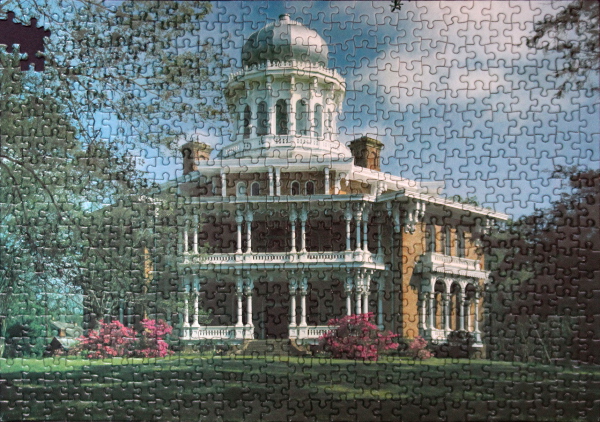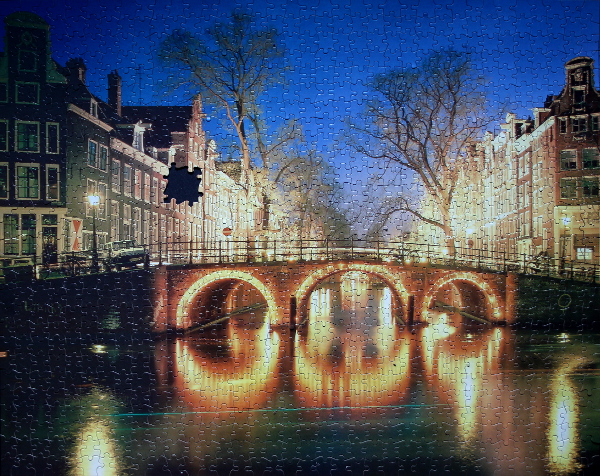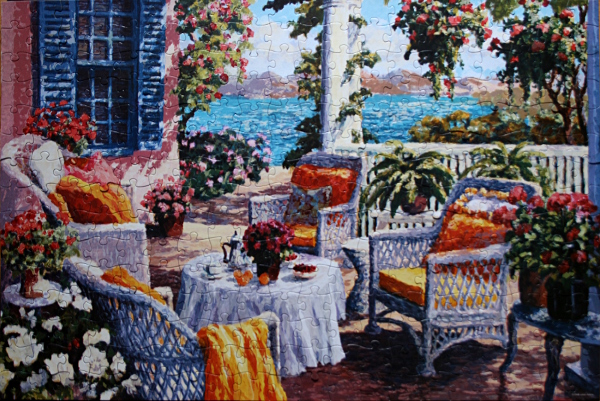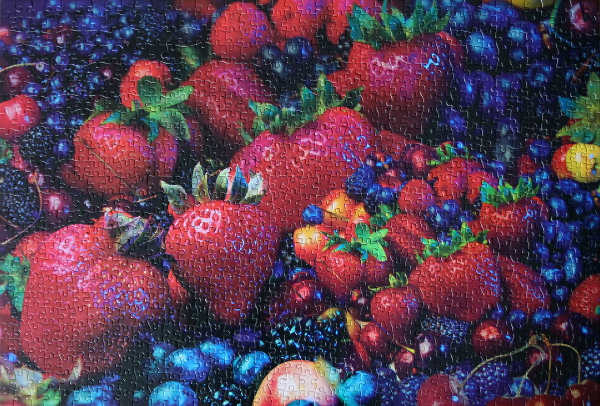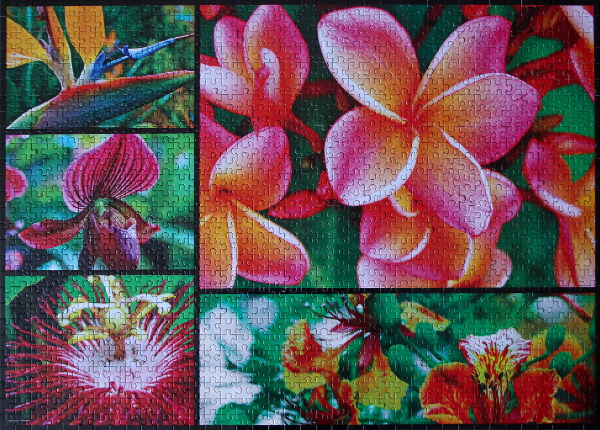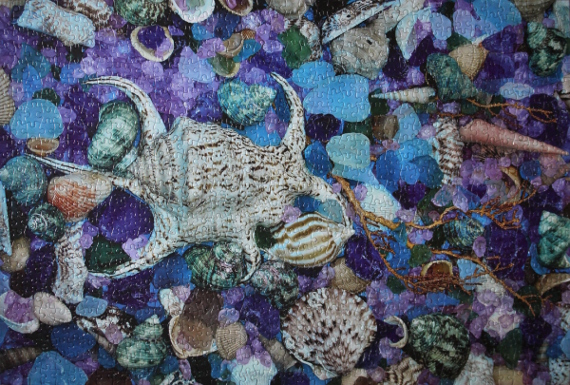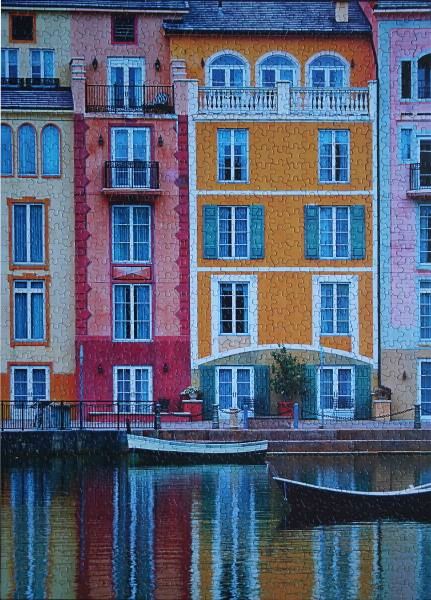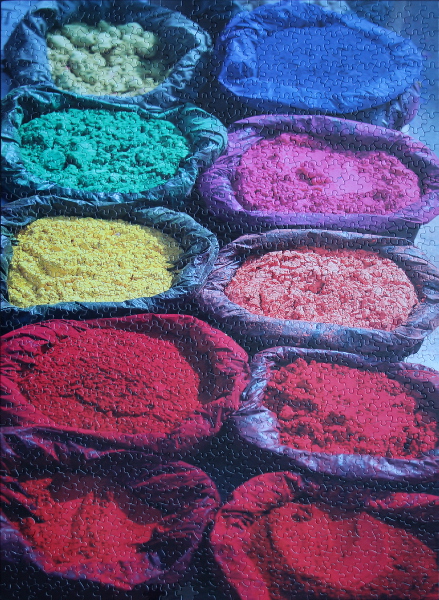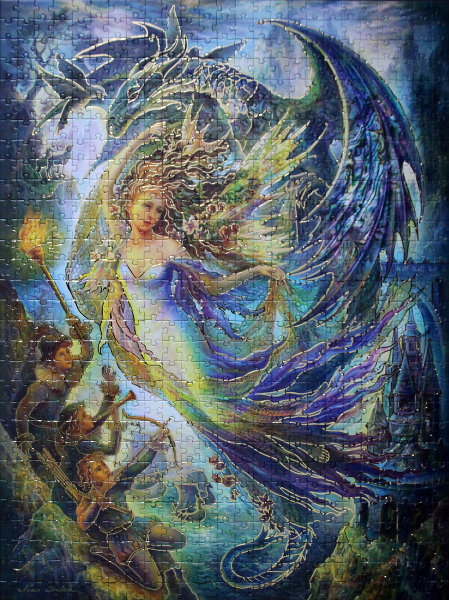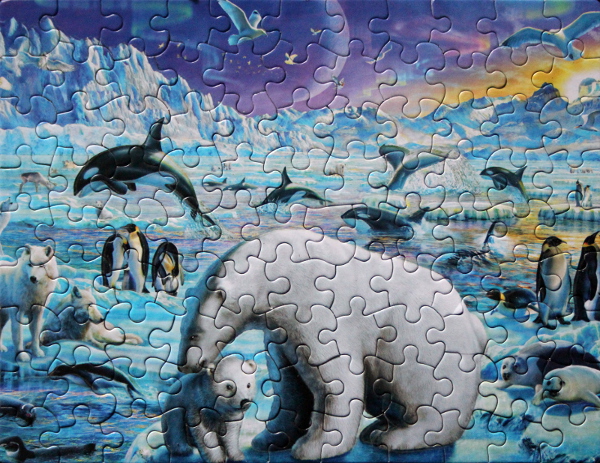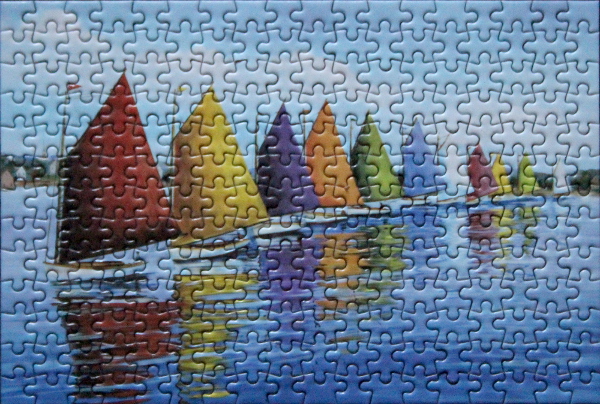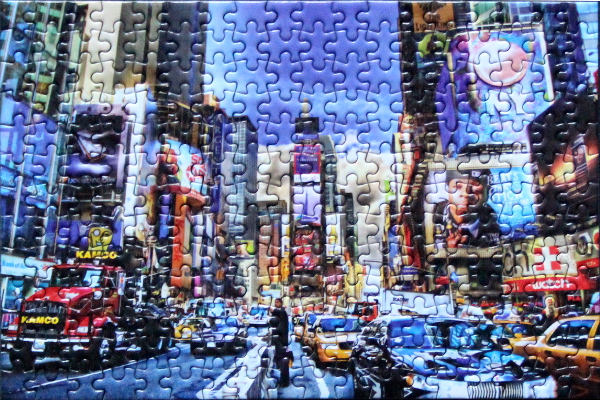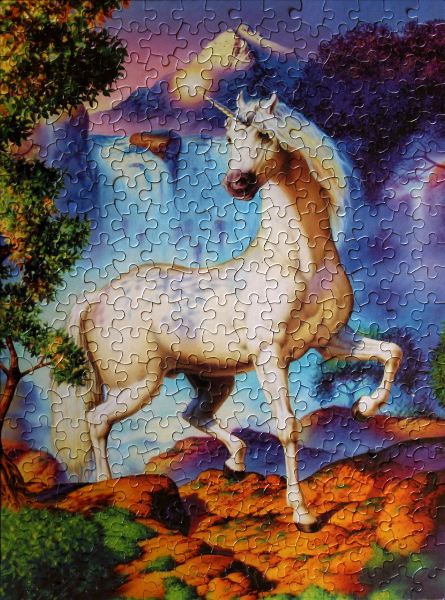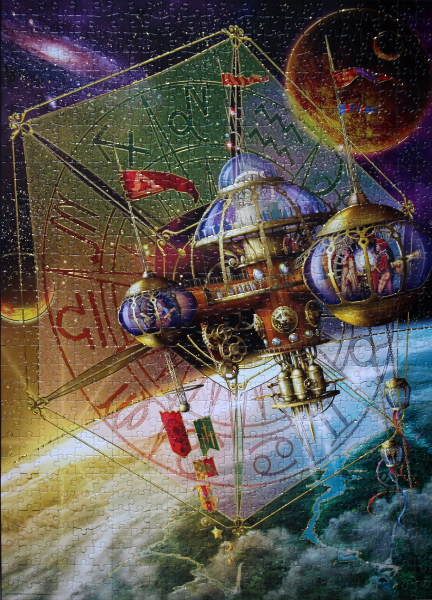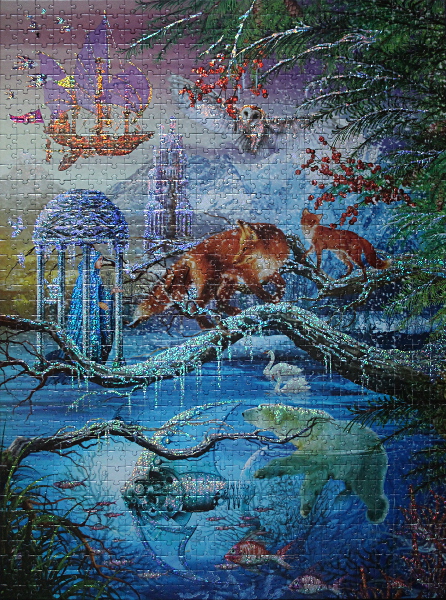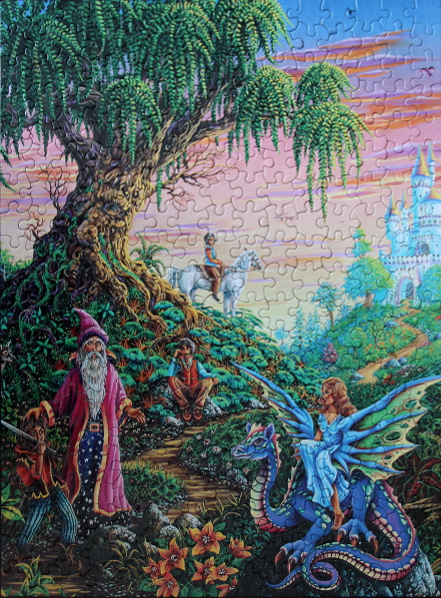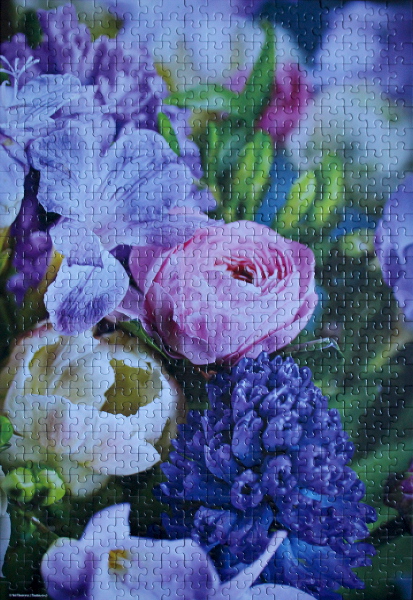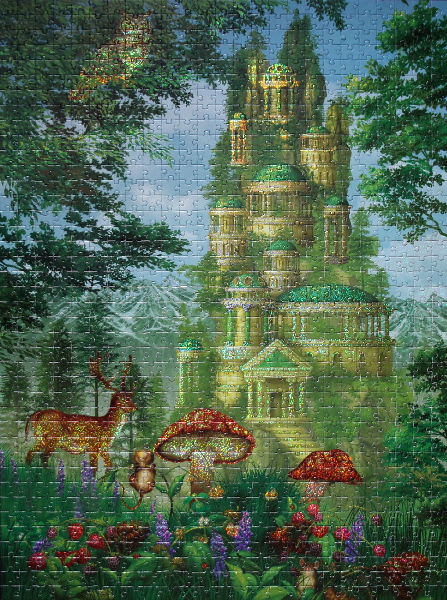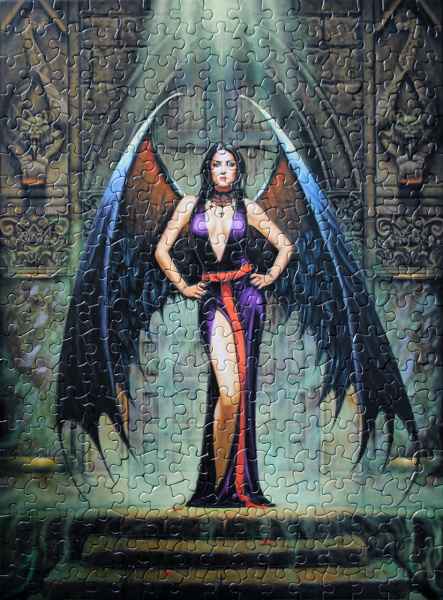Size: 500 pieces, 3 missing
Dimensions: 35.24 cm x 50.48 cm
Producer: MB, Hasbro, 1998, C4611-7
Puzzle: This puzzle does not have a title or specify where this place is. A big thank-you to Nic Phillips who has commented with the location.
Simple puzzle due to the number of pieces and the symmetric nature of the architecture. A lovely, serene scene to assemble. Good places to start are the borders between the sky and the building, as well as between the sky and the trees. The dome, pillars, balustrades, white arches, windows, and dark gaps between the white pillars can be assembled next, followed by the flower bushes, the orange of the walls, and the grass. The sky and the trees are slightly less trivial, but the remaining regions are not large and pieces fit together well. Overall quite an enjoyable puzzle, alas found by me with 3 pieces missing.






